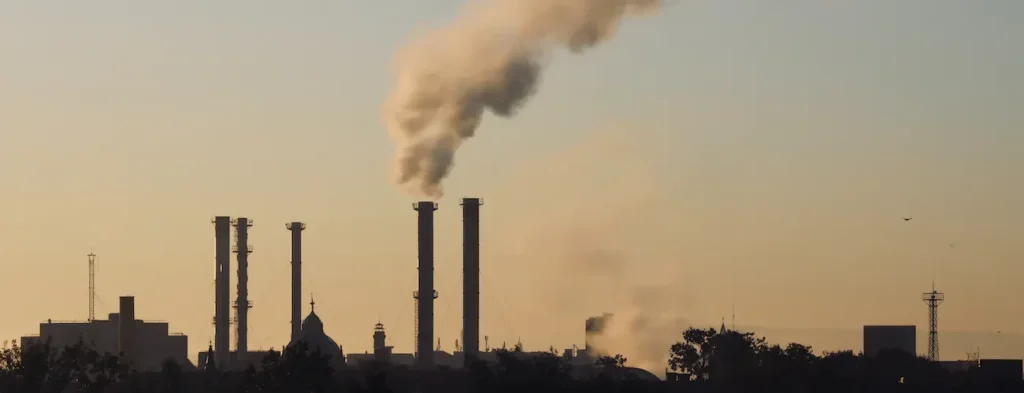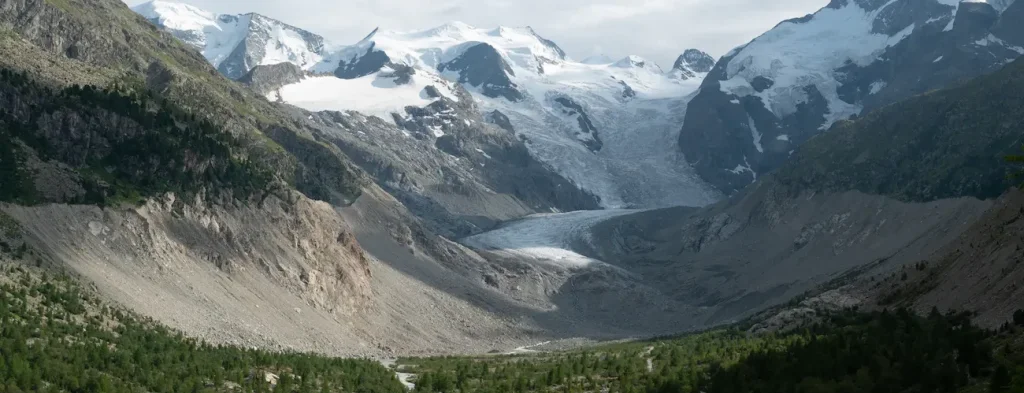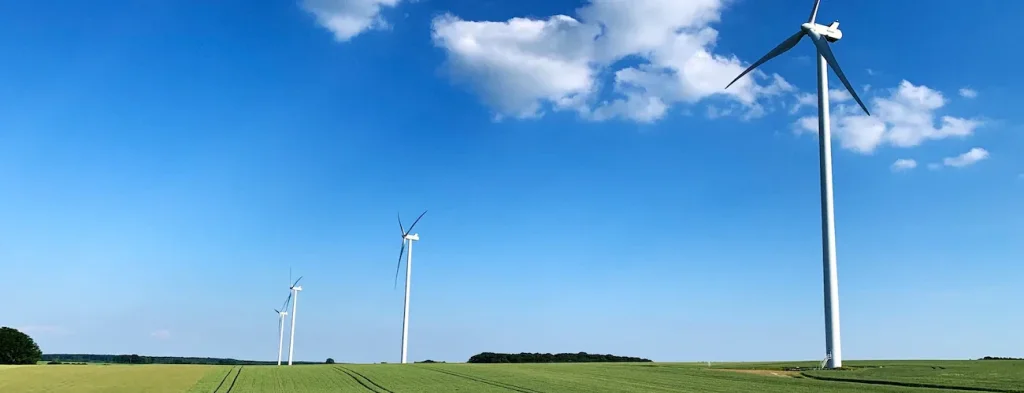
What is climate change?
Simply put, climate change refers to long-term shifts in temperature and weather patterns. There have always been changes in the Earth's climate over its billions of years of history, shown through phases such as the ice age. However, these are natural changes to the climate that happened over thousands of years — unlike the rapid changes we've seen in our climate since the Industrial Revolution.
The main way humans are causing this accelerated climate change is through greenhouse gas emissions. Greenhouse gases do occur naturally, but it's human activities, such as the burning of fossil fuels, deforestation, as well as agriculture and land use changes, that have increased their concentration significantly (see here, here, and here).

Which greenhouse gases cause climate change?
It's worth noting that carbon dioxide emissions are by far the largest contributor to climate change. In fact, by 2020, the level of carbon dioxide in the air had risen to 48% above its pre-Industrial Revolution level. But there are a few other greenhouse gases involved:
Methane (CH4)
Nitrous oxide (N2O)
Fluorinated gases
Once greenhouse gases are emitted, they absorb and re-emit infrared energy, trapping heat in the Earth’s atmosphere (that's the greenhouse effect). Just as greenhouse gases exist naturally, so does the greenhouse effect. It's the reason why the Earth has a temperature that supports life, but as emissions have increased, this natural process has been disturbed.
Since the start of the Industrial Revolution in the late 1800s, human activities have caused the Earth’s temperature to increase by 1 degree, and we're on track to exceed 1.5 degrees within the next decade. This may not sound like much, but it puts a heavy burden on our global climate system.
What are the impacts of climate change?
Climate change doesn't just mean it's getting warmer — and it's not affecting everyone equally.
Even though scientists warn that we must not exceed a global temperature increase of more than 1.5 degrees, it's important to note that there will not be a single 1.5-degree warmer world. For example, Switzerland has already seen a 2-degree increase in temperature since 1864.

Another important note is that there are many individuals, particularly those in developing countries, who are going to experience the greatest effects of climate change. International cooperation is crucial to protect these communities, especially since developed countries are responsible for 79% of global greenhouse gas emissions.
Here are 4 of the major changes we can expect to see, or are already seeing, as the Earth’s climate continues to change:
Droughts and heatwaves - Climate change will increase the frequency and intensity of droughts and heatwaves across the world. Apart from posing risks to people and wildlife, heatwaves also cause wildfires that can disrupt transportation, communications and energy supplies. Drought is especially problematic for those in developing nations. Between 2005 and 2015, more than 80% of drought-induced economic loss in developing nations related to livestock, crops, and fisheries. However, this impact of climate change isn't confined to developing countries. In 2021, the US experienced an estimated $17 billion in crop losses during a record dry spell in 2012.
Increased levels of precipitation causing flooding - Another consequence of global warming is that a warmer planet will lead to increased rainfall. This is because warmer air can hold more moisture, with this equating to about 7% more moisture for every degree of temperature change. As a result, existing heavy rainfall patterns will intensify, leading to more flooding and resulting damage.
Hurricanes will become more dangerous - As long as the climate continues to warm, hurricanes are set to become more intense. Since 1975 there has been a substantial increase in the amount of category 4 and 5 hurricanes, equating to a 25-30% rise for every 1°C of human-induced global warming. Hurricanes are already some of the costliest natural disasters. The trio of Harvey, Maria, and Irma that hit the US in 2017 accounted for $268 billion worth of damage alone.
Sea levels will continue to rise - Global mean sea levels have risen between 21-24cm since 1880, a third of which has happened in the last 25 years. By 2100, sea levels are predicted to rise by up to 84cm further. This will cause destructive coastal erosion, soil contamination, wetland flooding, and habitat loss.
We need large-scale mitigation measures to stop climate change
Although there are damages that can't be undone, there is still time to act. This will require large-scale changes to how the world operates, for example, a shift toward renewable energy.

Energy is one of the most important areas for consideration in the fight against climate change because it accounts for over 60% of global greenhouse gas emissions, and fossil fuels still make up more than 80% of the energy mix. In order to limit global warming to 1.5 degrees as set out by the Paris Agreement, we must reduce our annual CO₂ emissions to 25 billion tons by 2030 instead of the 56 billion tons we will more likely reach by that time.
It's estimated that governments spend around $600 billion annually on subsidizing fossil fuels, a number five times higher than the amount spent on supporting clean energy. In terms of CO₂ emissions, coal is the most polluting fuel, yet it's the least taxed — 85% of coal used for heating and industrial processes is untaxed and the average tax rate on coal is below €2 per ton of CO₂. Putting a price on carbon and taxing the use of fossil fuels could provide an incentive to move toward clean energy.
However, phasing out the use of fossil fuels and moving toward a low-carbon economy is only possible if renewable energy sources are readily available. The major types of renewable energy sources are energy from biomass, hydropower, geothermal energy, wind energy, and solar energy.
What about the many tons of CO₂ we've already emitted?
Large-scale mitigation measures like reducing greenhouse gases by shifting to renewable energy are crucial, but they'll take more time to come into effect than we'd like them to. At Climeworks, we believe it's important to empower everyone to make an impact today. Climeworks has developed a direct air capture technology that permanently removes carbon dioxide from the atmosphere. This solution will allow us to address historic, as well as unavoidable, emissions and enable the world to reach net-zero emissions by mid-century.

Anyone can join our mission by becoming a Climeworks Pioneer and removing CO₂ from the air. Since we can measure how much CO₂ is removed with our direct air capture machines, we can tell you exactly how much carbon dioxide removal you have enabled. As a Pioneer, you'll join over 9,000 individuals as well as leading businesses like Microsoft, Shopify, and Swiss Re that already act and remove CO₂ from the air.
Lead the race toward net zero
High-quality carbon removal for your climate strategy.
